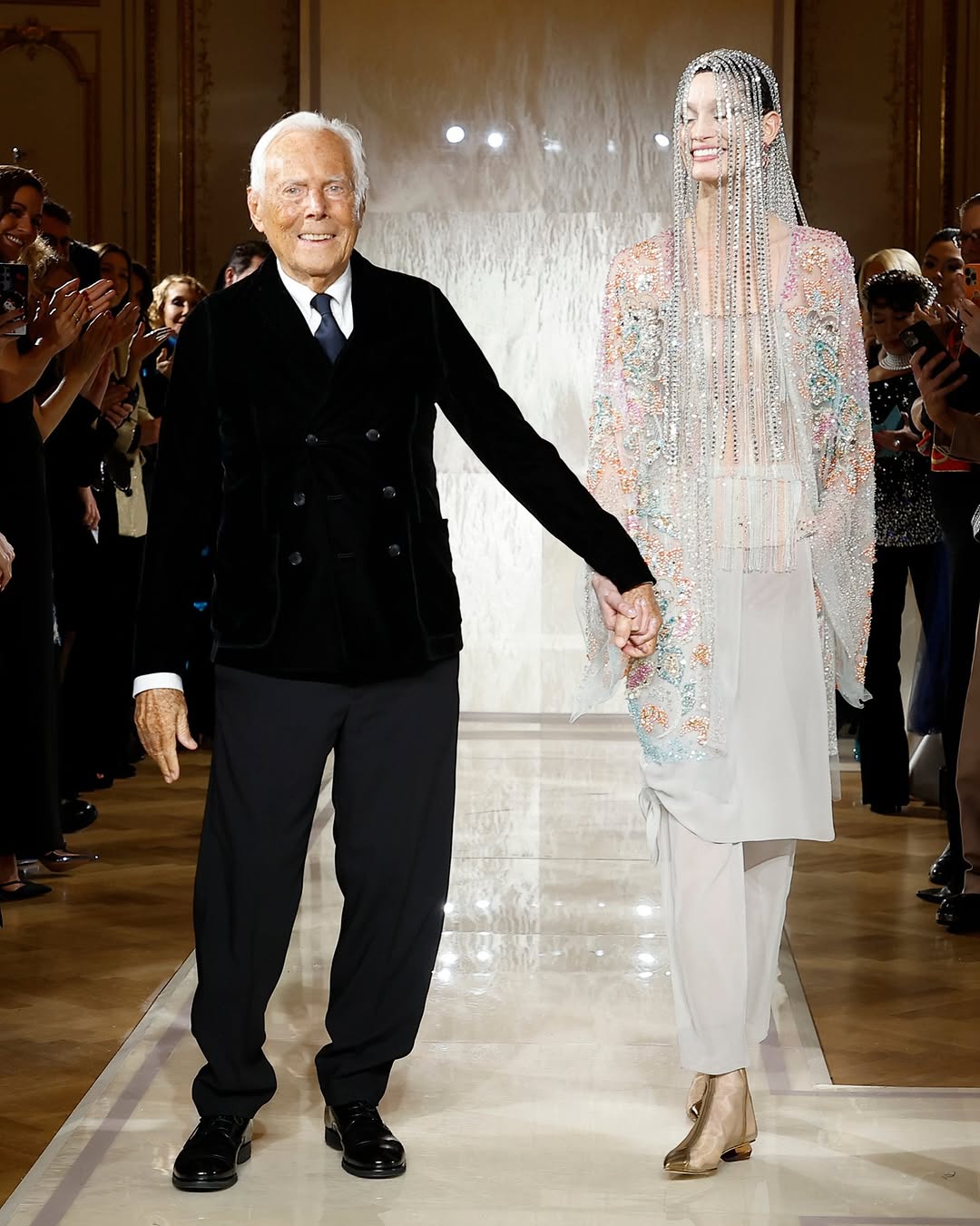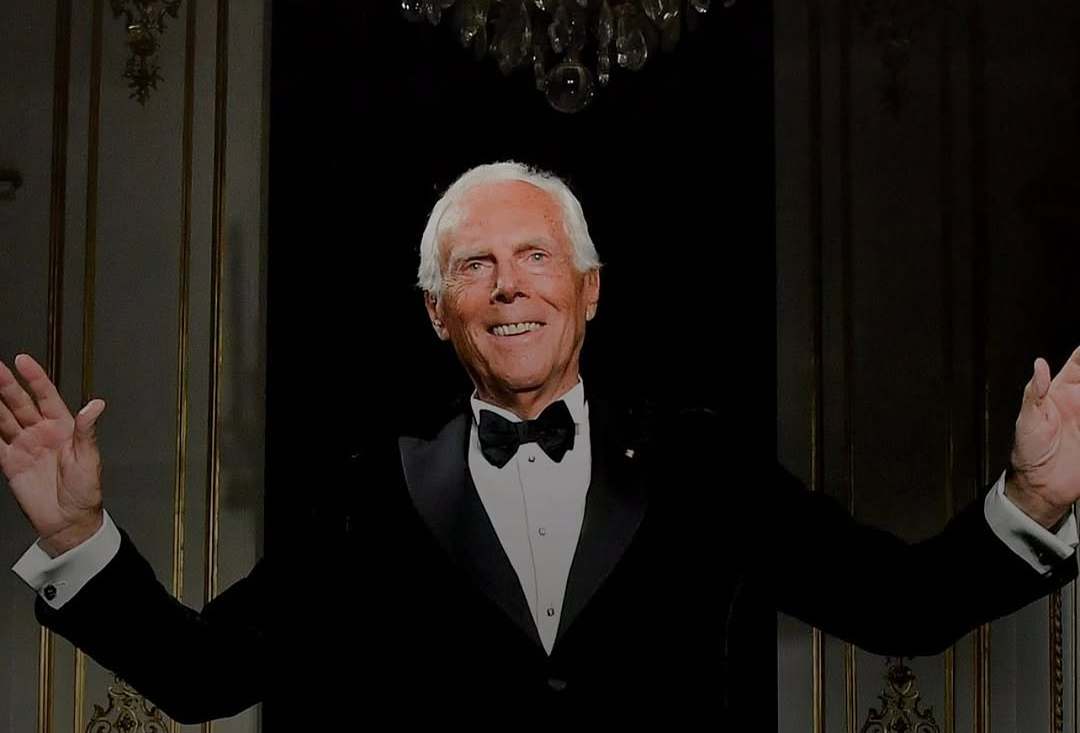A Legacy of Timeless Elegance
Giorgio Armani passed away peacefully at 91, leaving behind not only a cultural legacy but also one of the most enduring privately-owned luxury empires in the world. Until his final days, Armani remained chairman, CEO, and creative director of Giorgio Armani SpA, embodying the philosophy of understated elegance that defined his work and made his brand instantly recognizable.
From Humble Beginnings to Global Fashion Icon
Armani was born in 1934 in Piacenza, Italy, to a modest family. Initially studying medicine, he shifted careers after discovering a passion for clothing and aesthetics. His entry into fashion began at La Rinascente, a department store in Milan, where he honed his eye as a window dresser and buyer.
In the 1960s, Armani joined Nino Cerruti as a designer and later freelanced for several Italian labels. By 1975, together with his partner Sergio Galeotti, he launched Giorgio Armani SpA. Armani’s breakthrough came with his reinvention of the men’s suit—softened, deconstructed jackets that brought comfort to formality. This look became synonymous with power and modernity in the 1980s, especially after Richard Gere famously wore Armani in American Gigolo.
By 2024, the empire had grown into a company generating over €2.3 billion in annual revenue, valued at between €7–10 billion by analysts. Armani himself amassed an estimated personal fortune exceeding $9 billion, making him one of the wealthiest figures in fashion. His journey was not just about style—it was a case study in entrepreneurial grit and brand discipline.
Vertical Integration, Quality Control & Brand Integrity
One of Armani’s sharpest business moves was pulling his company back from widespread licensing in the 1980s and 1990s. Instead, he began acquiring suppliers and production partners—such as Simint and Antinea—to bring operations in-house.
This vertical integration allowed Armani to maintain strict quality standards across multiple lines, from high-end Giorgio Armani to accessible Emporio Armani and Armani Exchange. Crucially, it also protected margins and brand consistency in a world where over-licensing had diluted rivals.

Giorgio Armani
Expansion Beyond Clothing: Lifestyle as Business
Armani believed fashion was just one part of luxury living. He extended the brand into home interiors, cosmetics, eyewear, and fragrances—ultimately creating a complete lifestyle ecosystem.
Perhaps most ambitiously, he entered hospitality. The Armani Hotels, developed in partnership with Dubai-based Emaar, became symbols of his holistic design vision: understated, modern, and impeccably tailored. This diversification not only expanded revenues but positioned Armani as more than a fashion designer—he became a cultural architect of luxury itself.
Who Owns Giorgio Armani Now?
Following his passing, the future of Giorgio Armani SpA is defined by a carefully constructed succession plan. Armani was the company’s sole shareholder until his death—a rare feat in today’s fashion world, dominated by conglomerates like LVMH and Kering.
To safeguard the brand’s independence, he established the Giorgio Armani Foundation in 2016. The foundation now controls the company, with leadership expected to include trusted family members—his sister Rosanna, nieces Silvana and Roberta, and nephew Andrea Camerana—alongside long-time collaborator Leo Dell’Orco.
The governance structure was designed to prevent hostile takeovers and maintain Armani’s creative ethos. With different classes of shares carrying varied voting rights, the system ensures stability while enabling the foundation to carry forward Armani’s vision.
This makes Giorgio Armani SpA one of the few remaining independent luxury giants—a company still rooted in the philosophy of its founder, even in his absence.

Giorgio Armani
Why It Matters to Business Leaders
-
Independence as Strategy: Armani proved that a brand could thrive outside conglomerates if built on clear values and controlled growth.
-
Vertical Integration: Bringing production in-house safeguarded both quality and profitability.
-
Diversification: Moving beyond apparel allowed Armani to weather industry cycles and build cultural longevity.
-
Succession Planning: His meticulous approach shows how founder-led empires can prepare for continuity without dilution.
Related: The Designer behind the "Protect the Dolls" T-Shirt: Fashion Meets Activism in 2025
Related: Inside the World of Danielle Frankel: Bridal's Coolest Designer














